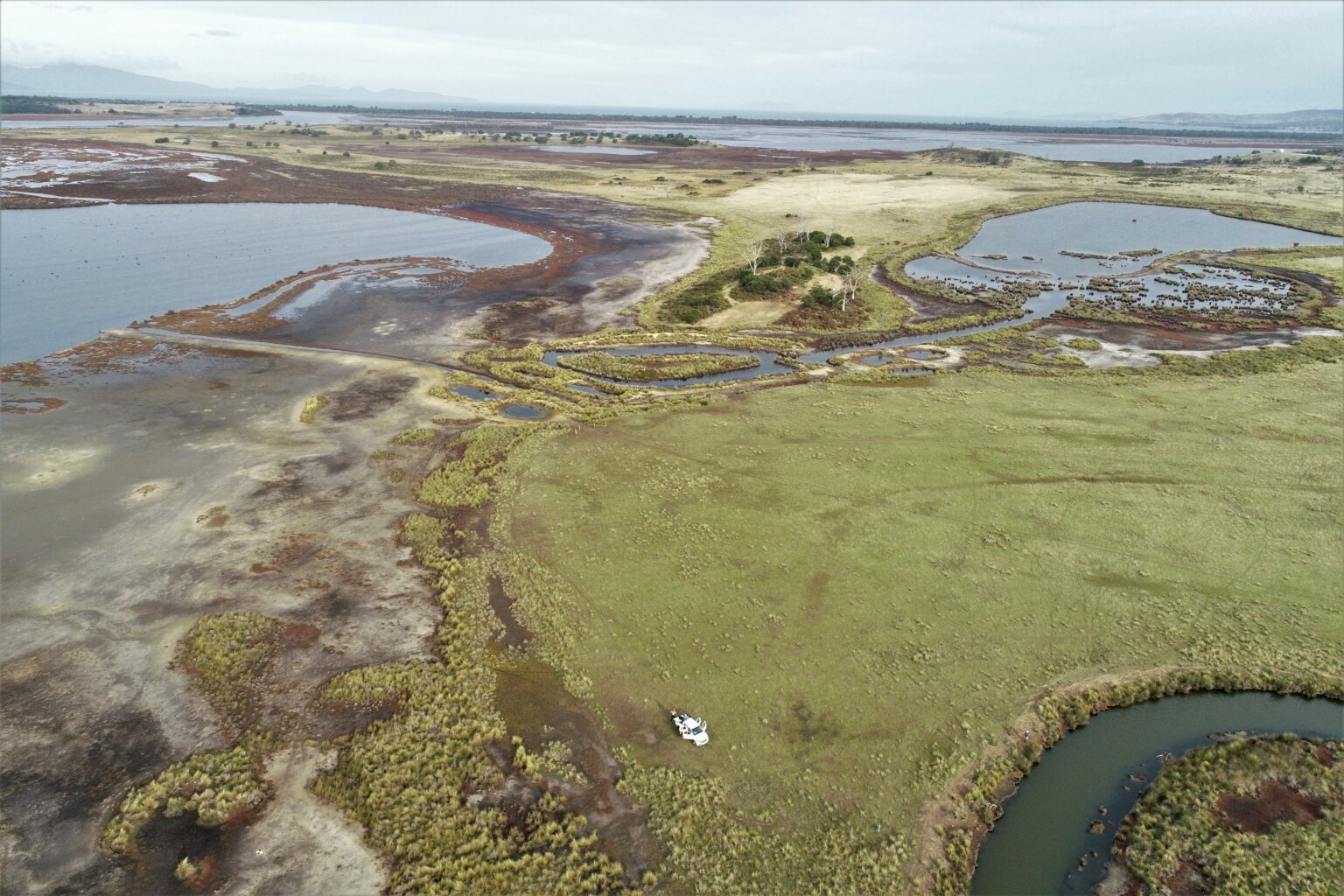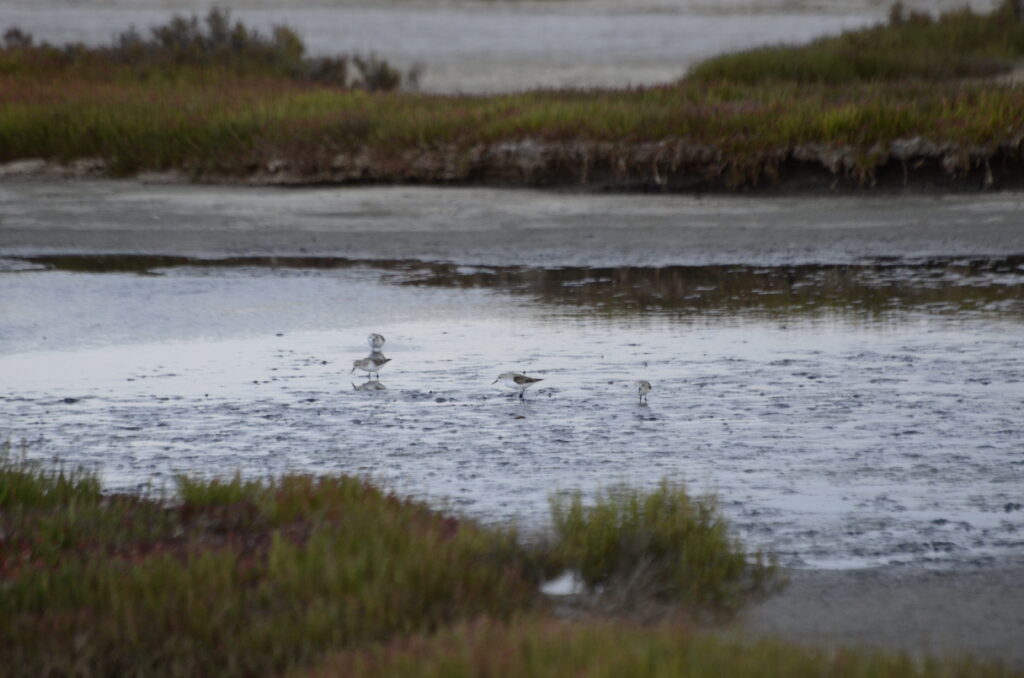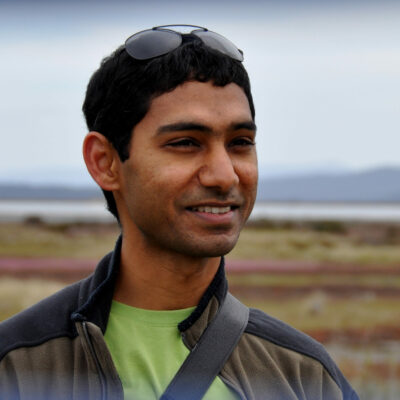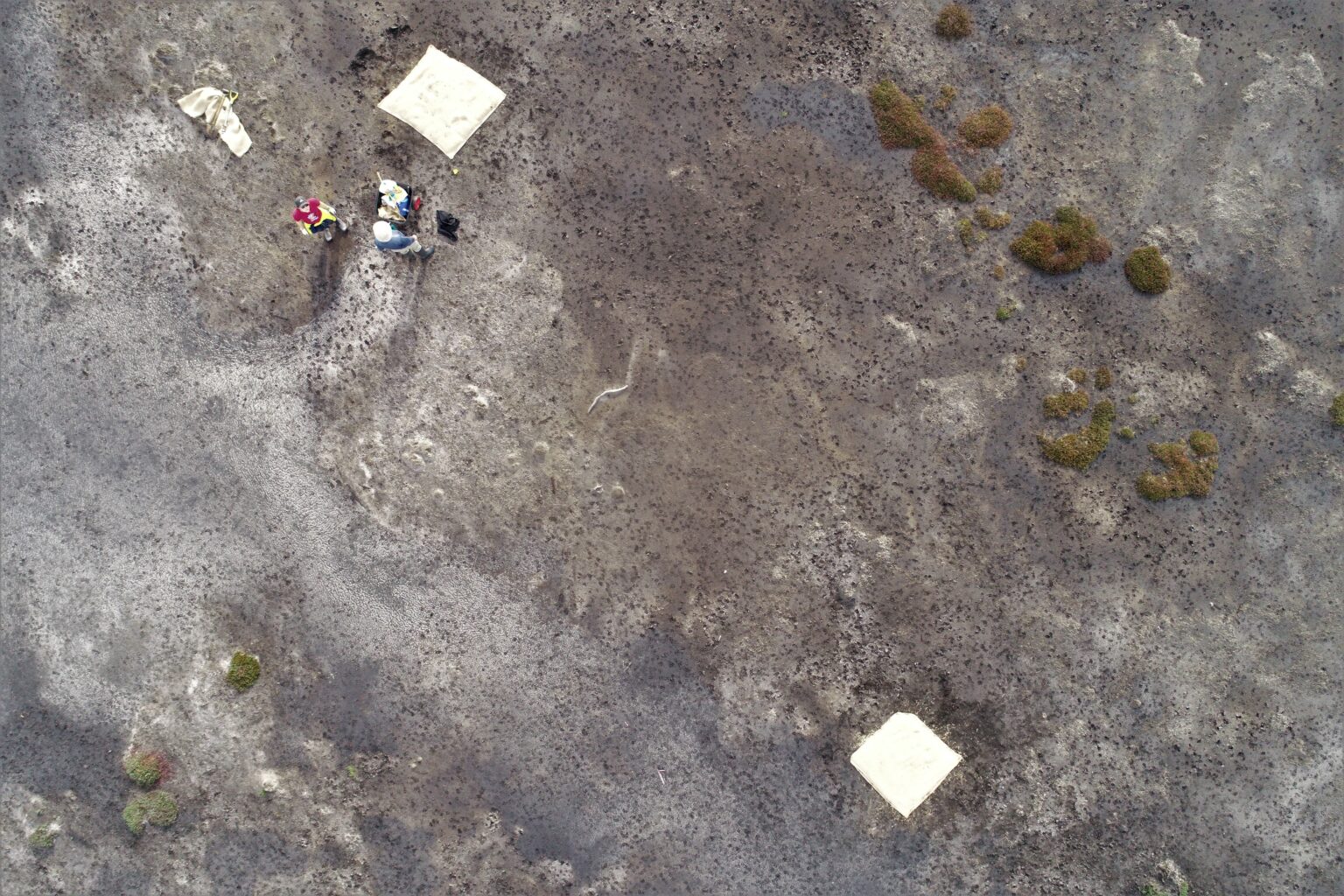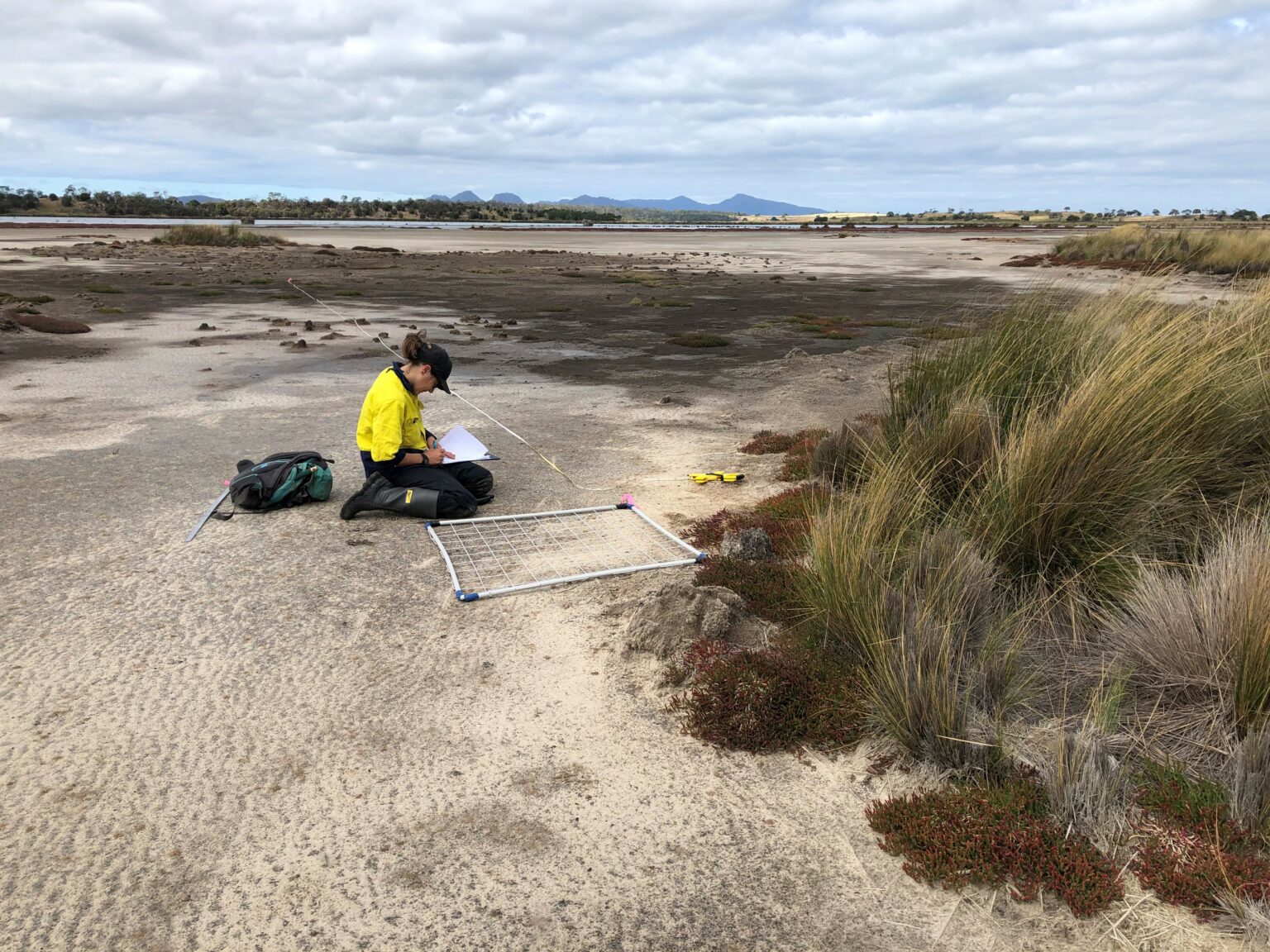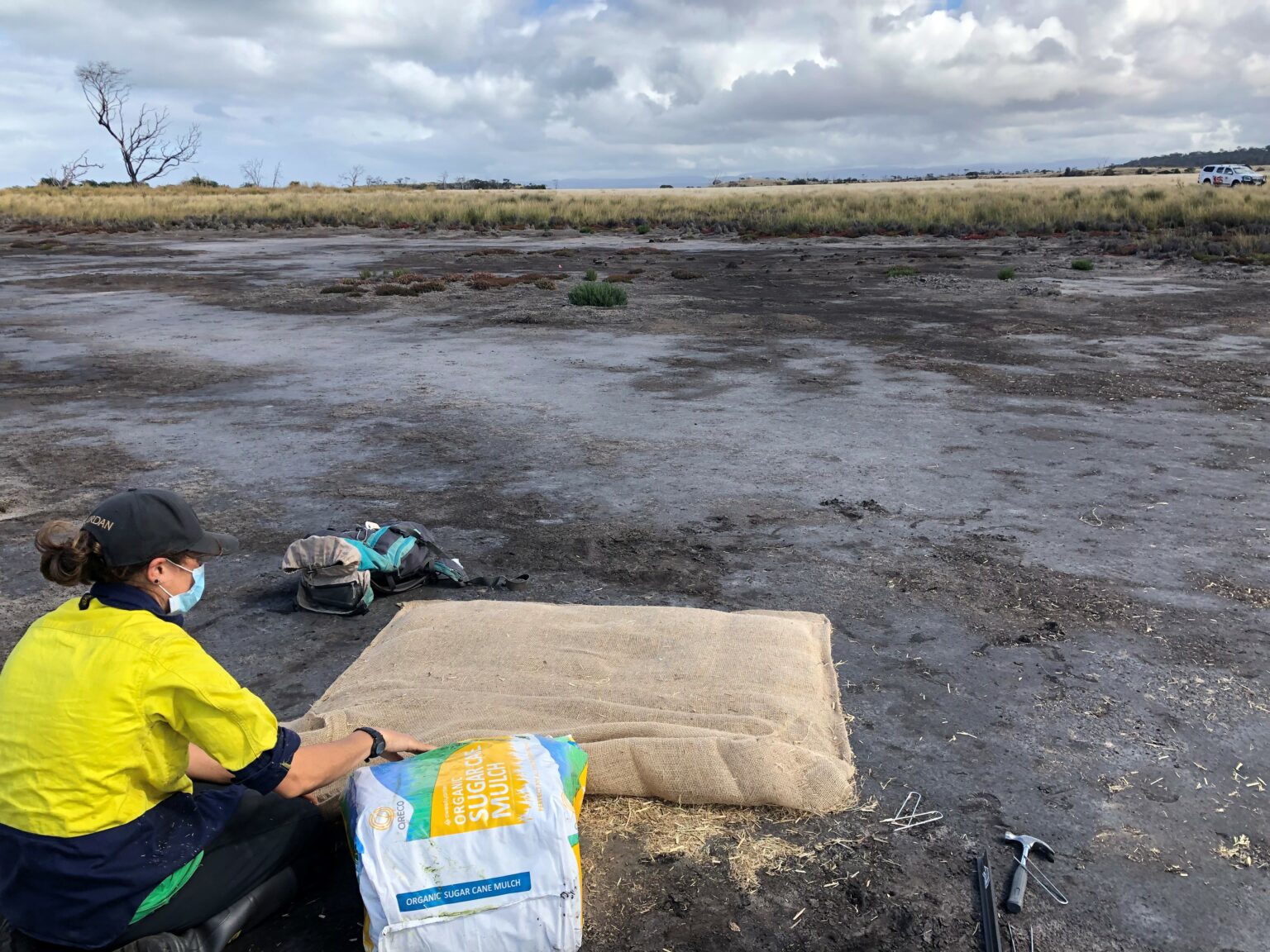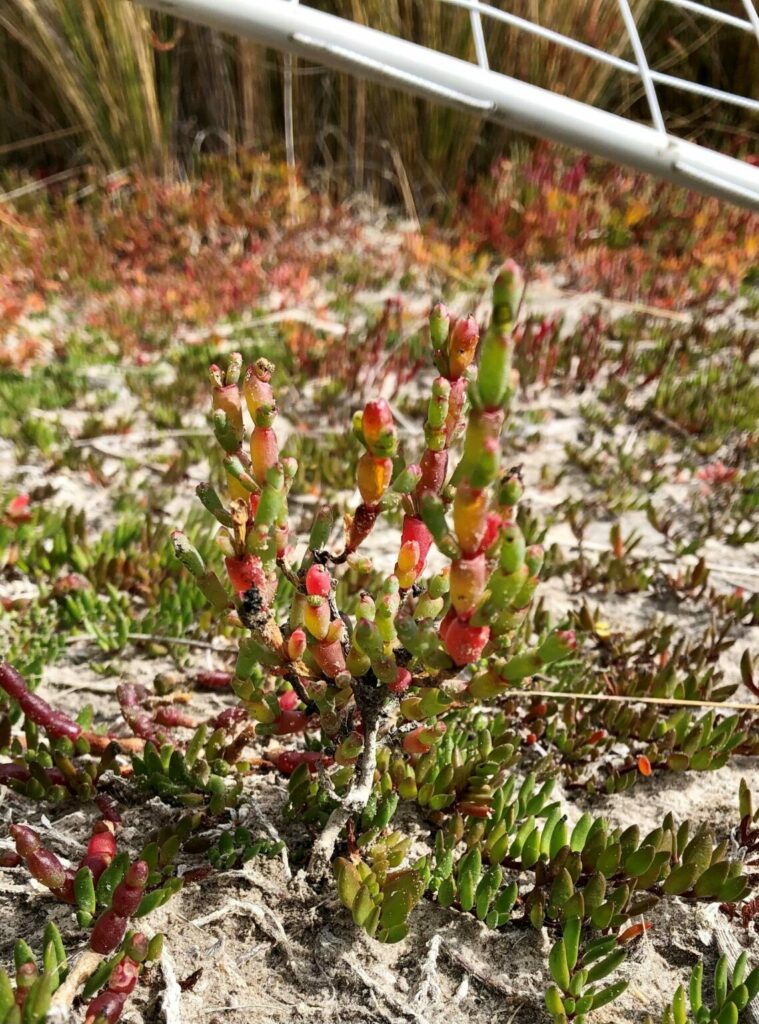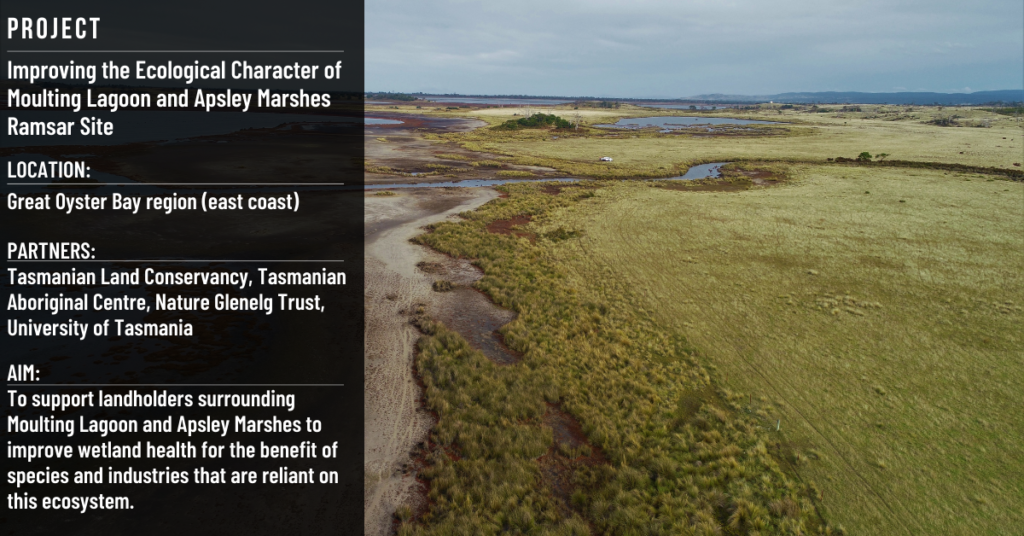
At Apsley Marshes/Moulting Lagoon, an iconic wetland complex on Tasmania’s east coast, NRM South is supporting research into how saltmarshes that have become degraded after decades of grazing can recover. Moulting Lagoon and Apsley Marshes are internationally significant Ramsar wetlands. They provide critical habitat for migratory birds, support a local population of more than 5,000 black swans and are an important breeding ground for fish and other aquatic species.
THE IMPORTANCE OF SALTMARSH
Saltmarsh habitats, common along swell-sheltered sections of the Tasmanian coastline, are often undervalued in terms of their importance to the environment and people. However, research has shown that they provide important nursery areas for juvenile fish such as hardyheads, mullets and flounder, buffer against coastal erosion and flooding during big storms, and play a key role in storing carbon – at rates 66 times higher than terrestrial forest systems. They are also critical foraging habitats for migratory bird species which use them over the warmer months of the year prior to their long flights north for breeding.
Despite the benefits they bring, saltmarsh habitats Australia-wide are under threat. Pressure from coastal development, sea level rise, pollution, and agricultural practices such as grazing has contributed to the loss and degradation of about 70% of saltmarsh across Tasmania since the 1950s. There is still a lot to learn about these landscapes, particularly how they recover from degradation, and over the last few months, NRM South has been working with University of Tasmania researcher Dr Vishnu Prahalad to find out more.
‘Wetlands are one of the richest, most diverse yet poorly studied ecosystems in Australia. The more we learn, the more it’s clear that coastal saltmarshes and wetlands are incredibly important for maintaining healthy coastal and marine systems. In Tasmania we’re only beginning to understand how saltmarshes recover from impacts such as grazing. We don’t really understand what species establish first, how long that takes and how we can support the systems to recover more quickly.’ -Vishnu Prahalad
NRM South’s ‘Improving the Ecological Character of Moulting Lagoon and Apsley Marshes Ramsar Site’ project is working to address threats to the wetland and support landholders to improve wetland health for the benefit of species and industries that are reliant on this ecosystem. One of the project’s activities is collaborating with landholders to destock strategic areas of saltmarsh adjacent to Moulting Lagoon and let them regenerate.
Studies elsewhere in Australia suggest that saltmarsh regeneration post-grazing can be extremely slow and it can take a disturbed system up to 20 years to recover. Vishnu is leading a study to determine how the saltmarsh regenerates, and ways in which regeneration can be supported. He is trialling methods that may increase sediment capture and seed deposition during floods, to increase the speed of recovery.
Grazing can completely alter the state of saltmarsh systems. You can go from a functioning habitat to sandflats that are devoid of plant life. The purpose of this study is to see if you can put the recovery process on fast forward. By encouraging sediment deposition with strategic placement of hessian and mulch, we want to see if it will encourage pioneer species to establish and decrease the overall restoration time – hopefully by half. Understanding the time frames and processes involved with saltmarsh recovery in Tasmania is critical for planning future recovery projects. The more long-term data sets we have, the better we’ll understand how these ecosystems recover and how we can help them do so.’ – Vishnu Prahalad
While the study is only in its early stages, stock exclusion combined with good local rainfall over 2020-21 has kickstarted saltmarsh regeneration, with new seedlings already visible in some areas. Even though full regeneration is still a long way off, Vishnu is hopeful that when he returns in two years’ time the area will be well on its way to recovery.
This program is being delivered by NRM South in partnership with the Tasmanian Land Conservancy, the Tasmanian Aboriginal Centre, Nature Glenelg Trust and the University of Tasmania, through funding from the Australian Government’s National Landcare Program.
